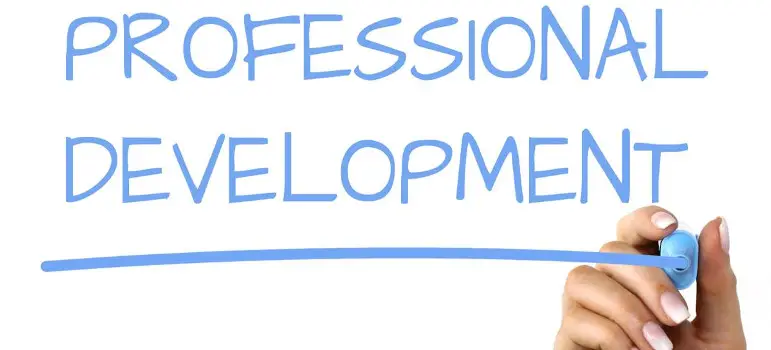This article discusses an enhanced professional development model for teachers with an array of activities that can help improve their teaching performance and increase their students’ academic performance as well. This model is one of the findings taken from the dissertation of Dr. Mary G. Alvior entitled, “In–Service Training Programs, Teacher Factors, and Student Performance: Bases for Enhanced Professional Development Model for Teachers (2011).”
Today’s knowledge-based economy and the rapid explosion of networked communications across the globe have created pressures among educators to prepare students such that they will possess a wide range of skills, content knowledge, and practical experiences needed to survive in this highly competitive world.
In the Philippines, the Department of Education has recognized the importance of acquiring the 21st century skills through the integration of Information and Communication Technology (ICT) in the educational process (Lapus, 2008). However, the study of Maligalig and Albert (2008) showed that the contributing factor for low quality basic education in the country is the lack of competent teachers. This result is in consonance to the reforms stipulated in the Basic Education Sector Reform Agenda (BESRA) particularly in the Key Reform Thrust 2 that there is a need to improve the classroom performance of English, Mathematics, and Science teachers for better learning outcomes.
This educational scenario prompted the researcher to zero in on the professional development activities for teachers by espousing the idea that the classroom performance of teachers is a critical factor for student academic performance. She based her assumption from Weiner’s Attribution Theory that there are external and internal factors that can improve performance. Students may attribute their academic performance to their teachers (external factor) while the teachers may attribute their teaching performance to the in-service training they attended (external factor) and perhaps, to their teaching efficacy, job satisfaction, and attitude towards the teaching profession (internal factors).
As a result, the enhanced professional development model was developed by using the following results:
- students’ performance,
- teachers’ perception and satisfaction of INSET programs,
- level of teaching efficacy,
- level of job satisfaction, and
- attitude towards the teaching profession.
The Professional Development Model for Teachers
The professional development model provides teachers different professional development activities that suit their needs and improve students’ academic performance. For example, they may get some activities that are self-directed or that can be done in school or through the use of Information Communication Technology (ICT). Thus, this model is called the Customized Professional Development Model for Teachers.

In this model, teachers can modify the professional activities by using the three-mode and two-mode combinations. By using the three-mode combination, they may choose specific activities from each major type. For example, they may choose reflective journal for self-directed, lesson study for school-based, and audio-video tape analysis for ICT-based.
Likewise, teachers may have three sets of combinations for the two-mode combination. They may opt for activities under School-based and Self-directed, Self-directed and ICT-based, and School-based and ICT-based. Table 1 contains specific activities under each type of professional development model.
Table 1
The Array of Professional Development Activities
| SELF-DIRECTED ACTIVITIES | SCHOOL-BASED ACTIVITIES | ICT-BASED ACTIVITIES |
| Reflective Journal | Observation/Assessment | On-line Learning |
| Personal Research | Open Lesson | Electronic Networking |
| Teacher Portfolio | Lesson Study | Audio-video Tape Analysis |
| Jigsaw Reading | Study Group | Personal Research* |
| Inquiry/Action Research | Reflective Journal* | |
| Case Study | Teacher Portfolio* | |
| Mentoring | Lesson Study* | |
| Professional Development School | Study Group* | |
| Dual Audience, Direct Instruction | Peer Coaching* | |
| Seminar | Coaching* | |
| Conference | ||
| Demo Lesson | ||
| Workshop | ||
| Team Teaching | ||
| Peer Coaching | ||
| Coaching | ||
| Visitation | ||
| Professional Book Talk | ||
| Talk Walking | ||
| *can be done using ICT |
This Customized Professional Development Model is a “generic model”, in which all teachers at all levels can use. The purpose of this model is to empower teachers to choose their own from an array of professional development activities through a written contract with their school heads/administrators.
However, the researcher does not recommend the use of this model as a primary means of providing professional development for teachers. Instead, it should be used to complement and enhance the standardized professional development activities mandated by the Department of Education.
References
Lapus, J.A. (2008). The education system facing the challenges of the 21st century country: Republic of the Philippines. Retrieved 25 September, 2010 from http://www.ibe.unesco.org/National_Reports/ICE_2008/philippines_NR08.pdf
Maligalig, D. S. & Albert, J. R. (2008). Measures for assessing basic education in the Philippines. DISCUSSION PAPER SERIES NO. 2008-16. Retrieved 3 July, 2010 from http://dirp4.pids.gov.ph/ris/dps/pidsdps0816.pdf
Partnership for 21st Century Skills. (2007). 21st century skills professional development: a partnership for 21st century skills. Retrieved 1 June, 2010 from http://www.p21.org/documents/21st_century_skills_professional_development.pdf
Smith, C., Hofer, J., Gillespie, M., Solomon, M., & Rowe, K. (2003). How teachers change: A study of professional development. Retrieved 19 June, 2010 from http://www.ncsall.net/fileadmin/resources/research/brief25.pdf
© 2014 December 16 M. G. Alvior


